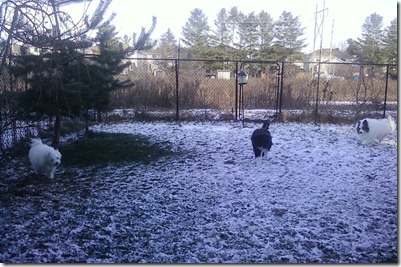Last week marked well over twenty thousand visits to this blog, from 78 countries – in less than a year!
I am really thrilled at this, and I still find it extraordinary to see Google searches that point specifically to my posts!
Thank you so much to all visitors!
Nino Rota: much more than movie music!
A few months ago, Michele sent me sheets for a rare duet for 2 oboes by Nino Rota. I say “rare” because I had never heard of Rota writing chamber music, but perhaps Italians play this all the time? At any rate, I take it as an honour to perform these and play both oboe parts using the multi-track recording system on my recording device.This is a set of 3 duets written specifically for 2 oboes, and I actually wanted to wait to record all three at the same time, but I have to celebrate 20000 visits! The duets are not difficult BUT the first oboe requires good control of the altissimo register (3rd octave key) and the 2nd and 3rd movements are really tricky in term of rhythmic ensemble. I need more time to get it right. This is not the first time I am pleasantly surprised with Rota, but I’ll mention that with the next recording. In the meantime, I hope you enjoy!
Facebook International Oboe Groups – Michele Mancaniello
 The groups on Facebook that join oboists and bassoonists from all over the world are simply fantastic. Apart from sharing videos, news, performance information, and many, many questions, the international exposure really expands our horizons.
The groups on Facebook that join oboists and bassoonists from all over the world are simply fantastic. Apart from sharing videos, news, performance information, and many, many questions, the international exposure really expands our horizons.
A few participants have distinguished themselves as particularly generous with their expertise, and resources. One such notable participant is Michele Mancaniello, a professor of music in Montemilone, Italy. Whenever anyone in the world is looking for music sheets of known or obscure pieces, Michele is quick to reply in the wonderful group Oboe in the World. Michele studied music and composition with Nino Rota before completing his formal training as a composer and oboist in Italy. Michele has amassed a considerable library of solo pieces and study repertoire for oboe and is fully eager to share (as permitted by law) with anyone who asks, anywhere in the world. He very humble and friendly: he is Italian, but I would like to see more people like him in Canada too!
Romantic dog…
This one is called “Vecchia Romanza”, an “old romance”. As I practice it, the music seems to tell me what it wants…. and I don’t hear much romance there… UNLESS I don’t interpret it as “old tune of romance” but rather “old people feeling romantic”. As I get older too, everything in the tune makes sense: it’s not just about hormones, but they are there – it’s not just about passionate feelings, but they are there – and it’s just as much about the memory of romance as it is about feelings today.
This recording was not intended to be the one for You-Tube: it was a warm-up rehearsal and has notes out of tune and errors in rhythm. But if you listen closely, on the last note you will hear a faint howl: that’s my Chihuahua/Maltese dog Popcorn (on the left in picture below), lying on his side and singing with me! ![]() When that happened and I heard it on the recording, I HAD to keep it!
When that happened and I heard it on the recording, I HAD to keep it! ![]()
![]()
 Winter reeds…
Winter reeds…
In a previous post (click here ![]() ), I had given 2 pictures of many reeds and said I would comment on them. The picture above is the one I used for this recording.
), I had given 2 pictures of many reeds and said I would comment on them. The picture above is the one I used for this recording.
Winter is only beginning to show up here: the worst will come in 2 months. But the effects on reeds is already starting to show: it was worse last week, but they are closing and the crow is much too smooth for my own liking. The reed I use here is shaped on an RDG –1 shaper (using my own gouge at ±0.60mm) and bound on a Stevens #3 thin-wall staple (46.5mm). The staple is very similar to Chiarugi 2+ and I find it really opens-up the expressiveness of the shape. I find (my experience – may be different for others) the RDG shapes can play with a really mellow tone, but the upper register gets much clearer: that is, the sound in the registers change a lot regardless of how the reed is scraped.
The ragged tip you see in the picture actually comes from using an old grenadilla plaque (bellied) which is worn-out: when scraping, the cane is not evenly supported and nicks happen that way. It plays really well nonetheless, only slightly resistant, but I don’t want to make it easier and loose the sound colour.


No comments:
Post a Comment